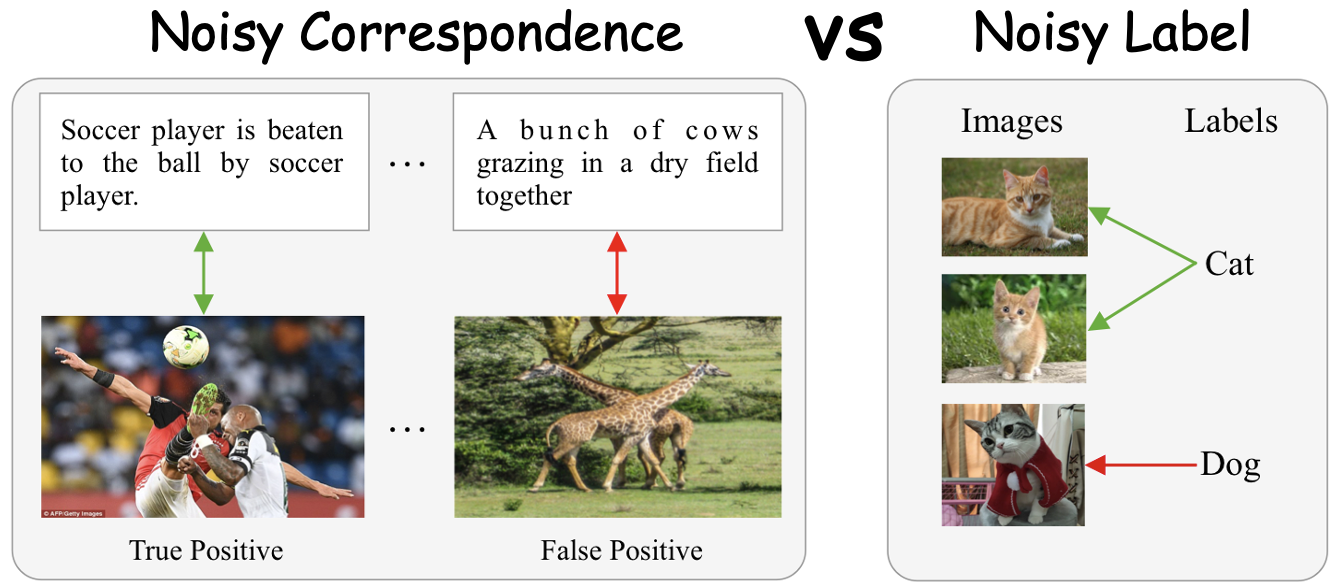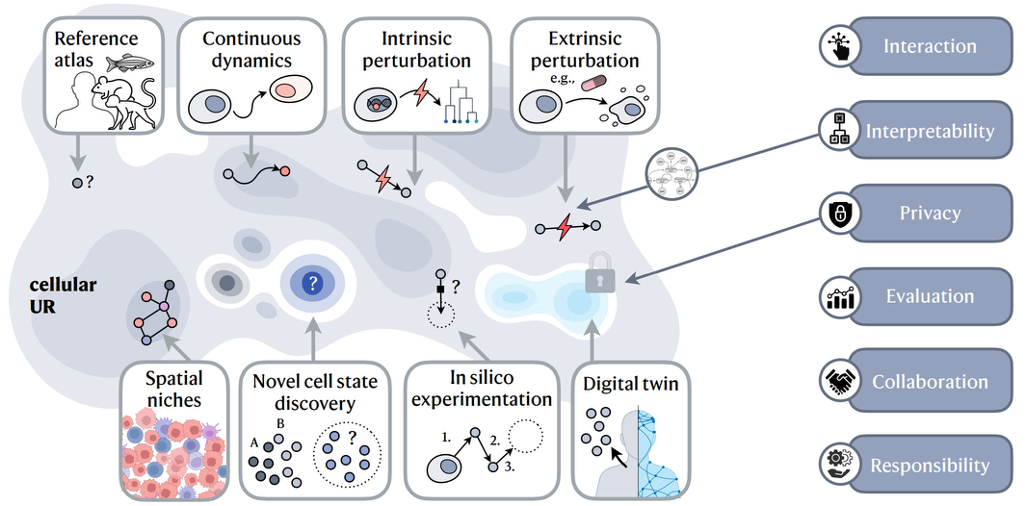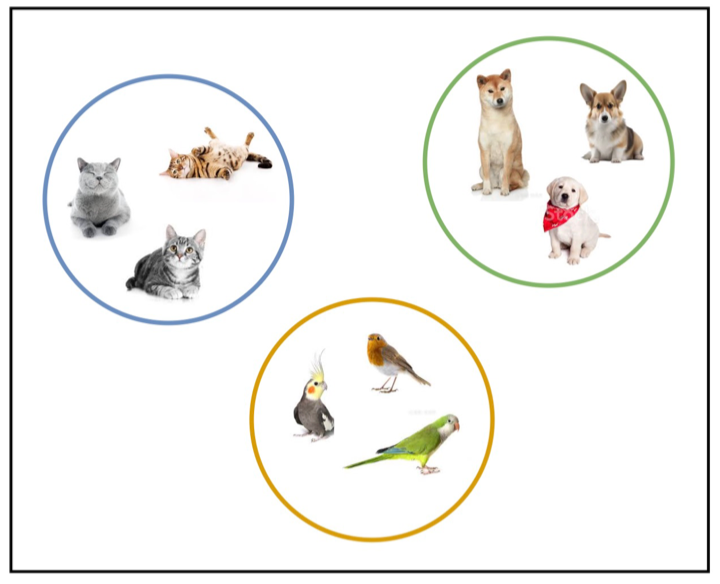Noisy Correspondence
Noisy correspondence learning emerges as a new research DIRECTION of noisy label learning. Learning with Noisy Correspondence (NC) aims to address the mismatched pairs rather than typical annotation errors. Unlike traditional noisy label learning which primarily addresses incorrect annotations, NC shifts attention to incorrect correspondences between data samples, such as false positive and false negative correspondences.
The concept of NC was first formally introduced by XLearning group at NeurIPS 2021 (Oral presentation), which highlighted the negative impacts of mismatched pairs on learning foundation models CLIP. Since then, NC has been studied in numerous tasks, e.g., fundamental models, retrieval, Re-ID, QA, dialogue systems, graph matching, video reasoning (in CVPR'21, NeurIPS'21, CVPR'22, TPAMI'22, AAAI'23, CVPR'23, ICLR'24, NeurIPS'24 etc.).
Selected Publications

AI4LifeScience
XLearning Group is dedicated to addressing core interdisciplinary challenges and developing tailored solutions. Our current research efforts focus on AI4LifeScience (Nat. Comm.'23, Nat. Comm.'25) and the exploration of Virtual Cell models to advance the understanding of biological systems. We warmly welcome collaborations and discussions with teams across diverse disciplines.

Clustering
Clustering is a classic and fundamental problem in machine learning, focused on partitioning instances into distinct clusters based on their inherent semantics in an unsupervised manner, which is closely intertwined with unsupervised representation learning, as both seek to uncover latent structures in data. Clustering serves as a cornerstone for various real-world applications, including anomaly detection, community discovery, and bioinformatics, etc.
XLearning group proposed one of the first deep clustering methods (arxiv'15, IJCAI'16), which equips clustering algorithms with powerful discrimination ability to handle complex real-world data. In 2021, we proposed the contrastive clustering framework (AAAI'21, IJCV'22), which elegantly unifies representation learning and clustering by performing contrastive learning in the row and column spaces, respectively. Motivated by the classic k-means clustering algorithm, we designed the first interpretable unsupervised neural network, which is intrinsically explainable and transparent (JMLR'22). Recently, by looking back on the development of the clustering community, we wrote a survey that summarizes deep clustering methods from the prior perspective (Vicinagearth'24). Correspondingly, we propose a new externally guided clustering paradigm (ICML'24), seeking abundant yet regrettably overlooked external knowledge as priors to facilitate clustering.
Selected Publications

Blind All-in-one Restoration
Blind All-in-one Restoration (BAR) is an emerging NEW research DIRECTION of image and video restoration. BAR aims to address multiple unknown types of degradations in a unified framework, rather than handling each known degradation separately as in traditional approaches.
XLearning group devotes to pushing image and video restoration towards more general application scenarios. Specifically, we have introduced several pioneering solutions: one of the first blind all-in-one image restoration network (AirNet, CVPR 2022), the first open-set image restoration method (TAO, ICML 2024), and the first blind all-in-one video restoration for time-varying degradations (AverNet, NeurIPS 2024).